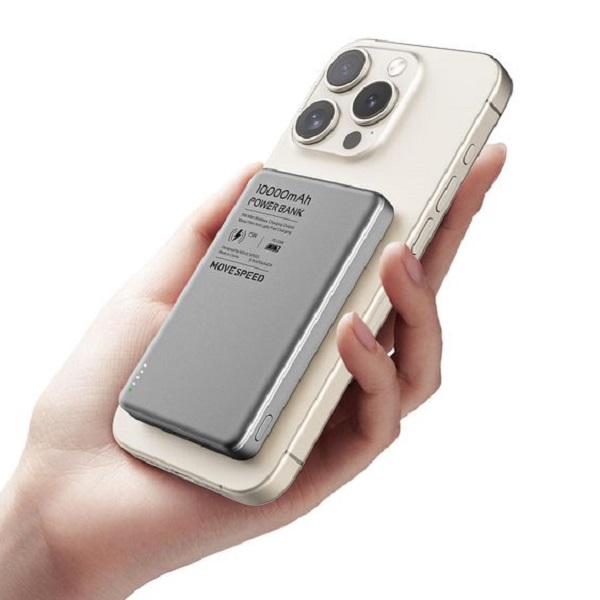In the age of wireless convenience, the allure of simply placing your phone on a pad to charge it is undeniable. But what if your phone wasn’t originally designed with wireless charging capabilities? Can you retrofit it to embrace this modern marvel? The answer is a resounding yes! Let’s explore the ways you can convert your phone to wireless charging and enjoy the freedom of cable-free power.
Understanding Wireless Charging
Before we dive into the conversion process, let’s briefly understand how wireless charging works.
Electromagnetic Induction
Wireless charging relies on the principle of electromagnetic induction. A transmitter coil in the charging pad generates an electromagnetic field, which induces a current in a receiver coil within your phone, thus charging the battery.
Qi Standard
Most wireless charging devices adhere to the Qi standard, ensuring compatibility across different brands and models.
Conversion Options: Adapting Your Phone
Several options exist for adding wireless charging functionality to your phone. Let’s explore each one in detail.
Wireless Charging Receivers
They are thin, flexible circuits that attach to your phone’s charging port and enable it to receive wireless power.
- Universality: These receivers are generally compatible with most smartphones, regardless of their charging port type (micro-USB or USB-C).
- Easy Installation: Simply plug the receiver into your phone’s charging port and adhere it to the back of your phone or place it inside your phone case.
- Affordability: Wireless charging receivers are a cost-effective way to add wireless charging to your phone.
Wireless Charging Cases
They are phone cases equipped with built-in wireless charging receivers.
- Convenience: They offer a seamless and integrated solution, eliminating the need for separate receivers or adapters.
- Protection: They provide both wireless charging capability and protection for your phone.
- Style: Wireless charging cases come in various styles and colors to match your preferences.
Magnetic Wireless Charging Adapters (for iPhones)
If you own an iPhone 12 or newer, you can utilize MagSafe-compatible magnetic wireless charging adapters.
- Snap-on Convenience: These adapters magnetically attach to the back of your iPhone, enabling wireless charging without the need for adhesives or plugging into the charging port.
- Compatibility: They are specifically designed for iPhones with MagSafe technology.
- Versatility: MagSafe adapters often support other MagSafe accessories like wallets or car mounts.
Choosing the Right Conversion Option
When selecting a conversion option, consider these factors:
- Phone Compatibility: Ensure the receiver, case, or adapter is compatible with your phone model and charging port type.
- Charging Speed: Some receivers or cases support faster wireless charging speeds than others. Consider your charging needs and preferences.
- Bulkiness: Receivers add minimal bulk, while cases can make your phone slightly thicker. Choose an option that suits your comfort and style preferences.
- Aesthetics: If aesthetics matter to you, choose a receiver or case that blends seamlessly with your phone’s design or complements your style.

Installation and Setup
Once you’ve chosen your conversion option, follow these general installation and setup steps:
-
Receiver Installation:
- Plug the receiver into your phone’s charging port.
- Adhere the receiver to the back of your phone or place it inside your phone case, ensuring the receiver coil aligns with the wireless charging pad’s coil for optimal charging.
-
Case Installation:
- Simply snap the wireless charging case onto your phone.
-
MagSafe Adapter Installation:
- Magnetically attach the adapter to the back of your iPhone.
-
Charging:
- Place your phone on a Qi-compatible wireless charging pad.
- Ensure proper alignment between the receiver/adapter coil and the charging pad’s coil.
- Your phone should start charging wirelessly.
Converting your phone to wireless charging is a simple and convenient way to embrace the future of charging technology. Whether you choose a receiver, case, or MagSafe adapter, you can enjoy the freedom of cable-free power and simplify your charging routine.
Troubleshooting and Optimization
While converting your phone to wireless charging is generally straightforward, you might encounter a few hiccups along the way. Let’s address some common troubleshooting tips and optimization strategies.
-
Slow Charging: If you experience slow charging speeds, ensure that your wireless charging pad is plugged into a power source that delivers adequate wattage. Some receivers or cases may also have limitations on charging speed. Consult the product specifications for more information.
-
Charging Interruptions: If charging intermittently stops or fails to start, check for proper alignment between the receiver/adapter coil and the charging pad’s coil. Thick phone cases, metal objects, or magnetic interference can also disrupt the charging process.
-
Overheating: In some cases, wireless charging can generate heat. If your phone or charging pad becomes excessively hot, discontinue charging and allow them to cool down. Avoid using your phone while it’s charging wirelessly to minimize heat buildup.
-
Compatibility Issues: Ensure that your wireless charging pad is Qi-certified and compatible with your receiver, case, or adapter. If you’re using a MagSafe adapter, make sure it’s designed for your specific iPhone model.

The Future of Wireless Charging
Wireless charging technology is rapidly evolving, promising exciting advancements in the near future.
- Faster Charging Speeds: We can expect to see significant improvements in wireless charging speeds, potentially rivaling or even surpassing wired charging speeds.
- Longer Range: Advancements in technology may enable wireless charging over greater distances, allowing you to charge your phone without having to place it directly on a pad.
- Multiple Device Charging: Future wireless charging solutions may allow for simultaneous charging of multiple devices, streamlining your charging routine.
As wireless charging becomes more prevalent and efficient, it’s poised to revolutionize the way we power our devices. By converting your phone to wireless charging now, you’re not only enjoying the current conveniences but also preparing for a future where tangled cables become a distant memory.
Beyond Smartphones: The Expanding World of Wireless Charging
Wireless charging technology isn’t limited to smartphones; it’s rapidly expanding to other devices and applications.
- Wearable Devices: Smartwatches, fitness trackers, and earbuds are increasingly incorporating wireless charging capabilities, offering a seamless and convenient charging experience.
- Tablets and Laptops: Some tablets and laptops now support wireless charging, eliminating the need for bulky power adapters and cables.
- Electric Vehicles: The automotive industry is exploring wireless charging solutions for electric vehicles, potentially revolutionizing the way we power our cars.
- Public Spaces: Airports, cafes, and other public spaces are starting to offer wireless charging stations, allowing you to top up your devices on the go.
The Environmental Impact: A Greener Choice?
While wireless charging offers convenience and eliminates cable clutter, it’s important to consider its environmental impact.
- Energy Efficiency: Wireless charging is generally less energy-efficient than wired charging, as some energy is lost during the wireless transmission process.
- E-Waste: The production and disposal of wireless charging accessories contribute to electronic waste. Choose durable and long-lasting products to minimize your environmental footprint.
Making Sustainable Choices
- Energy-Efficient Charging Pads: Opt for wireless charging pads with energy-saving features, such as automatic shut-off when your device is fully charged.
- Responsible Disposal: When your wireless charging accessories reach the end of their lifespan, dispose of them responsibly through e-waste recycling programs.

Conclusion
Converting your phone to wireless charging opens up a world of cable-free convenience and simplified charging. Whether you choose a receiver, case, or MagSafe adapter, the process is relatively simple and affordable.
Embrace the wireless revolution, bid farewell to tangled cords, and enjoy the seamless experience of charging your phone by simply placing it on a pad. The future of charging is here, and it’s wireless!
Remember:
- Compatibility: Ensure your chosen conversion option is compatible with your phone model and charging port type.
- Quality: Invest in a reputable brand and product to ensure optimal performance and safety.
- Enjoy the Convenience: Once set up, revel in the freedom of wireless charging and simplified power management.










